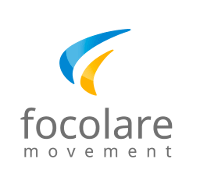Focolare has been in North America since 1955. Father Joe Scopa, a Scalabrinian missionary priest, returned to his parish in Chicago after attending a Mariapolis in Italy.
There, in the Dolomite mountains, he had met hundreds of laypeople who based their lives on the Gospel. During the devastation of World War II they had lost all they had, but in turn discovered what no bomb could destroy: God, who is love.
1943: the bomb-shelter spirituality
During ceaseless air raids in Trent, Italy, a group of young women gathered around Chiara Lubich in the shelters, taking only the Gospels with them. What they read by candlelight shone as if from within: “Ask and you shall receive” (Lk 11:9) and “For where two or three are gathered in my name, I am there among them” (Mt 18:20).
But the passage that inspired them most was Jesus’ last prayer: “That they may all be one, Father, as you and I are one” (Jn 17:21). They felt as if they had been born to work for the unity that Jesus prayed for.
After the war Chiara and her early friends continued to live the Gospel intensely, each month focusing upon one phrase, which they called the Word of Life. They shared their stories, and their group expanded. Their neighbors called their little apartment a “focolare,” which is Italian for “hearth,” a place where a family gathers around. It was there they felt at home.
When Fr. Scopa learned of Focolare, it was active throughout Italy. By the late 1950s it had spread across Europe, including behind the Iron Curtain, usually through personal relationships. When Fr. Scopa was about to return to America, Chiara told him not to worry about promoting Focolare, but rather just let others see a living example. He began a program for young adults at his parish, and from that group many early pioneers of the Focolare in the U.S. emerged.
1961: touching down in New York
In the late 1950s, Focolare reached Brazil, then the rest of South America. It officially reached North America when Giovanna Vernuccio, Antonio Petrilli and Sharry Silvi arrived in New York on September 14, 1961.
The first focolare houses in New York gave rise to others in Boston, Toronto, Montreal and Chicago. Later houses would open in Washington, D.C.; Vancouver; San Antonio; Los Angeles; Columbus, Ohio; and Atlanta.
In the early 1960s, observers at Vatican II from other Christian churches heard about the movement. In 1977, after Chiara received the Templeton Prize for Progress in Religion, people from other faiths—Buddhists, Hindus, Sikhs, Shintoists, Muslims—learned of Focolare for the first time.
The movement spread throughout Africa and Asia, and by the late 1980s it had reached more than 180 countries.
In May 1997, Chiara was invited to the Malcolm Shabazz Mosque in New York, where she shared her Christian experience with 3,000 Muslims, referencing quotes from Islam that were similar to the Gospel. At the end of the meeting, she made a pact of fraternity with Imam Warith Deen Mohammed. Three years later, they met again in Washington D.C. with 6,000 Christians and Muslims to celebrate an event called “Faith Communities Together.”
After Chiara’s death in 2008, the movement continued, following guidelines she had put in place. There would be an elected female president and co-president (a Catholic priest), together with a council of women and men to guide the Focolare worldwide. Today people of all ages and callings—children, teenagers, young adults, families, men and women religious, priests, bishops—live out the Gospel in this way, building the united world for which Jesus prayed.


